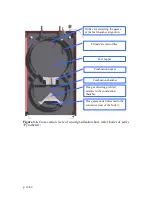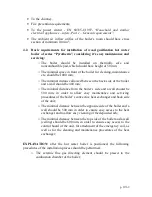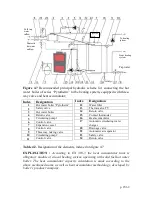
p. 30/69
of the boiler and not being touched (no fuel charging, no stirring), the fuel will
get bridged, i.e. the fuel particles as well as char will be collected around the
burner’s orifice and eventually will make blockage. This process will lead to
high hydraulic resistance of the burner’s orifice and will lead to thermal capacity
decrease. That’s why it is highly recommended to perform regularly manual
stirring of the char particles, oxidizing on the upper surface of the ceramic
burner’s orifice and eventually cleaning away the obstacles in order to ensure
high thermal capacity rates, covering the requirements for personal safety and
fire preventive measures. The fuel stirring also decreases the hydraulic
resistance of the burner’s orifice and thus the thermal capacity of the boiler will
be increased, due to high intensity of the volatile gases release of the wood logs
in the fuel hopper and efficient combustion process.
5.3.1.
Interface control board of wood gasification hot water boiler of series
“Pyrotherm”
The front panel of the interface control board of the boiler has the following
control devices:
Figure 5.1. Interface control board, equipped with control and operating devices
of hot water boiler of series “Pyrotherm” – front side view.
•
Operating thermostat – assigns the set-point of circulating water
in the boiler. The boiler’s flue gases fan will run until this set-point
is reached and will supply heat energy to the heating system. At
stop of the fan the boiler will go into stand-by mode;
•
Flue gas thermostat – assigns the set-point of flue gases
temperature. The boiler’s flue gas fan will not run at temperature
below the set-point of this thermostat and flue gases will not be
extracted by the flue gas fan, thus the remaining char will be
“START“
switch
START
indicator
Flue gas
thermostat
Thermo-
manometer
Operating
thermostat
Alarm 2
Alarm 1
















































